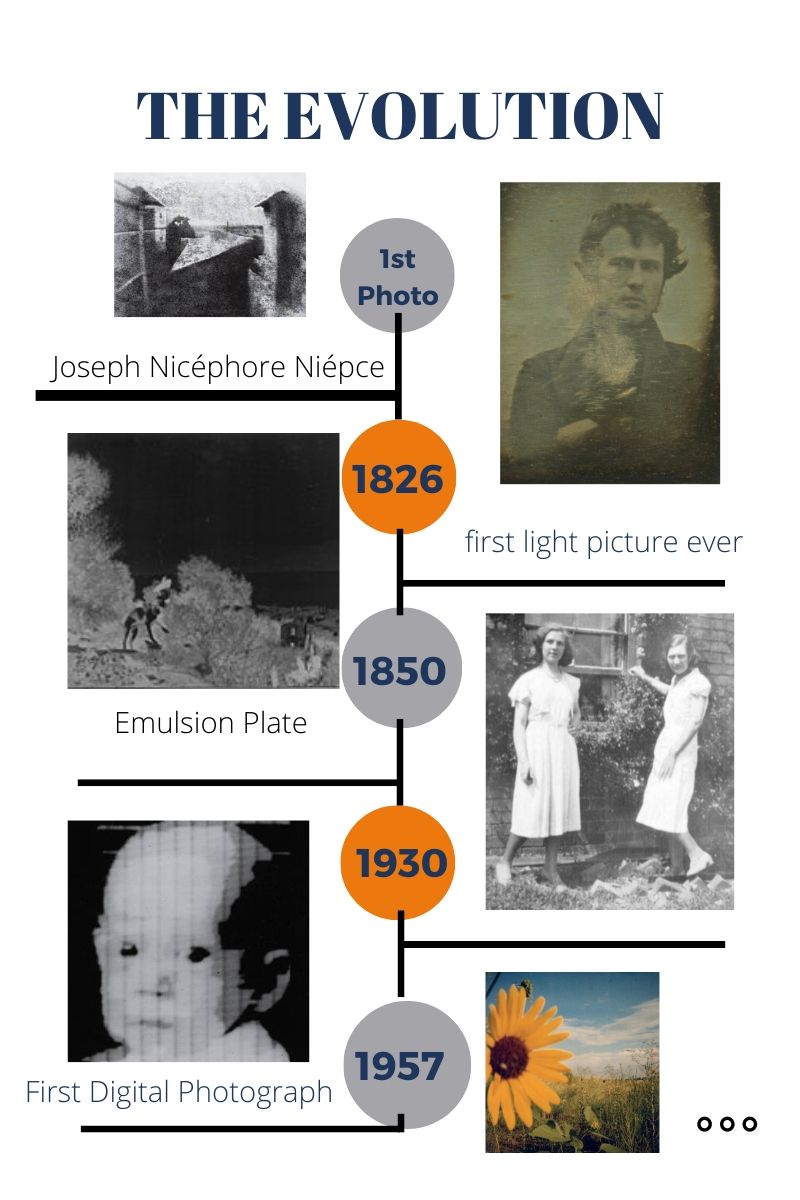It's a Sunday afternoon as you sit by the windowpane with your cup of tea, you have a new guest, and it's a beautiful blue robin. Your first response to such an incident is to take out your phone and get that perfect gram-worthy picture. In contemporary times photography has been one of the most accessible yet revolutionary forms of art. Making its way from the black-white images of park street buildings to detailed pictures of the Pench forest's wildlife. Photography like most of us have had a very interesting journey. In this article, we will saunter down this path.

On a 17th century afternoon, Joseph Nicephore Niepce created what is known to be the first and the oldest surviving photograph as, he looked out of his window in Burgundy, France, and that's where the journey commenced. However, our man Joe's process didn't get much acclaim though, as he couldn't explain the scientific working behind his discovery. That's when about a century later is when Robert Cornelius came into the picture (no puns intended) an American who worked in a metal polishing and silver-plating company. Cornelius became interested in the Daguerreotype process and sought to refine the technique using his knowledge of chemistry and metallurgical composition. In either October or November of 1839, Cornelius stood outside of his family's store and made what would be the first selfie in a line of billions to come. On the back of the photo, he wrote "The first light picture ever taken." Though not entirely accurate, Cornelius was correct in that his photo would go down in history as the first time a person was intentionally imaged using light.
Now in order, understand further we have to understand what daguerreotype photographs are. First, copper plate was coated with silver and exposed to iodine vapor before it was exposed to light. To create the image on the plate, the early daguerreotypes had to be exposed to light for up to 15 minutes. The daguerreotype was very popular until it was replaced in the late 1850s by emulsion plates.
Daguerreotype photographs have been the foundation of every milestone the field of photography has ever reached. As photography further evolved, concepts of printing and developing photographs were incorporated. In the 1930s the revolutionary 35mm was introduced. Amidst, the Second World War Henri Cartier Bresson, and other photojournalists used this to capture the horrors of the ongoing war. The Leica 35mm was and is still considered to be one of the finest cameras of all time as it was small and compact and dominated the photography market for years to come.
Moving on with the evolution to the much-awaited Polaroids, today even though they have become nothing but a VSCO aesthetic they too have an interesting tale to tell. In the 19th-century colour, photographs were raging in the market, however, they were very sensitive. Mr. Edward Land founded Polaroid with his distinct two-color process and it became, it undoubtedly became an important milestone.
Now comes the era of digital photography, it is the process of using electronic and computing appliances to capture, create, edit, and share digital images/photographs. It encompasses several different technologies to provide electronic or computer-based photography services. Eastman Kodak built the first recorded digital camera in 1975 using the CCD from Fairchild Semiconductor. Today, digital cameras are everywhere - not only as DSLRs and point-and-shoots but also in our phones, computers, cars, and hundreds of other places. But the digital age began back in 1957, and it was cameras like the Fotoman, the Fuji DS-1P, and the Kodak DCS100 that finally put these wondrous devices in the hands of photographers around the world.
Photography has evolved, in the field of both science and art, and undoubtedly been one the most important additions to the human artistic revolution. Keep clicking!!